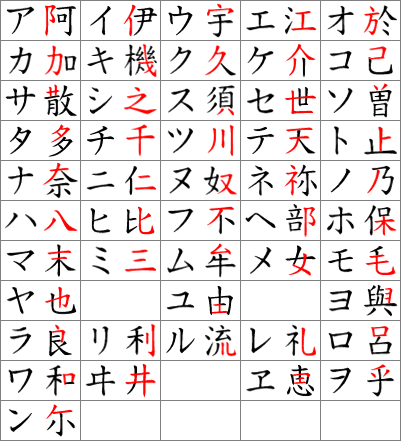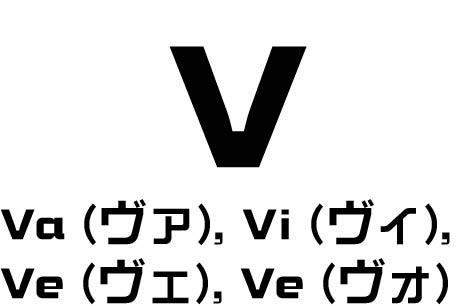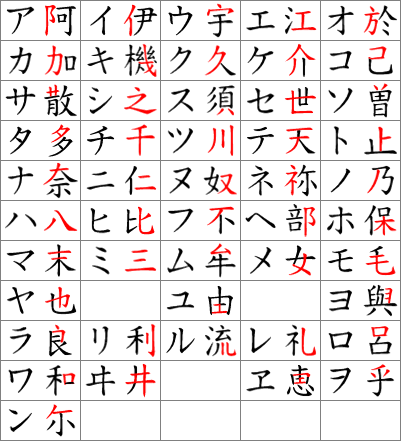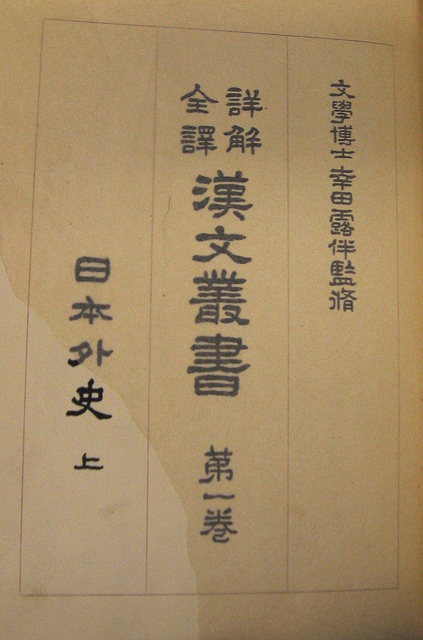
7 Facts About Katakana: The Origin and History of Japan’s Other Alphabet
Katakana is one of the three writing systems of the Japanese language, together with hiragana and kanji. Like hiragana, katakana is a syllabary alphabet, and is extremely simple when compared to Japan’s countless kanji characters. But katakana has its own unique purpose, such as appearing in manga as onomatopoeia, or for writing foreign words in Japanese, and the origin and history of katakana is fascinating. For those considering learning katakana, here are 7 facts to help familiarize yourself before jumping in!
This post may contain affiliate links. If you buy through them, we may earn a commission at no additional cost to you.
1. Katakana is one of three parts of the Japanese alphabet.

The Japanese language consists of three written alphabets: Hiragana, Kanji and Katakana. There are other Katakana special characters, but it has 47 basic characters.
2. Katakana expresses Kanji, foreign words, and onomatopoeia.

Katakana is used to read to Kanji and express foreign words and sounds (onomatopoeia). For example, the word "table" in English would be expressed in Katakana as テーブル (teeburu). For onomatopoeia, the sound of popping would be パチパチ (pachi pachi).
3. There's a Katakana sound for V sounds.
These V sounds, Va (ヴァ), Vi (ヴィ), Ve (ヴェ), Ve (ヴォ) only exist in Katakana in the Japanese language. For example, Vaio in Japanese Katakana would be written as ヴァイオ.
Our Top Tips
JR Pass for Whole Japan
Explore Japan in the most convenient and economical way with a Japan Rail Pass! It is valid for the majority of railways and local buses operated by JR.
4. Katakana originated from Kanji.
ja.wikipedia.org/
Katakana was seen in literature in the 7th century. Parts of Kanji were shortened to Katakana to make it faster to read. By the way, Hiragana originated from Kanji too.
5. Katakana started off as a way to read Old Chinese, Kanbun (漢文).
non-euclidean photography / FlickrAround the 9th century, scholars of Japanese Buddhism used Katakana to read Old Chinese, Kanbun. This is said to be the official origin of Kanji. Kantana used to read Kanbun is called Kunten (訓点). Kunten is small Katakana and is written beside Kanji.
6. During the early Meiji era, Katakana was used in formal documents.

yanchi1984 / Shutterstock.com
Compared to Hiragana, Katakana was thought to be more official and academic. Therefore, it was used in formal documents. Katakana was also taught in schools. This tradition was changed in Meiji 33 (1900), and Katakana was taught as one of the Japanese alphabets.
Our Top Tips
Japan Shinkansen, Narita Express (N'EX) & Express Train Tickets
Plan ahead by booking your shinkansen, airport train, and express train tickets online in English. Have the tickets sent to you by mail or collect them at the station once you're in Japan.
7. Back then, telegrams were written in Katakana.
If you're a fan of Japanese movies, you might have seen scenes where the characters receive telegrams. These telegrams were mainly written in Katakana. Telephones weren't placed at each home, so telegrams were a popular way to reach out to someone faster than letters.
The information in this article is accurate at the time of publication.





